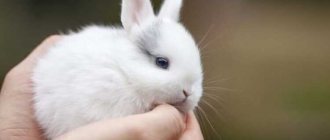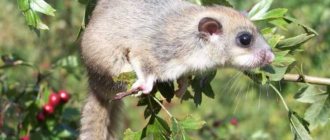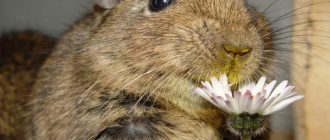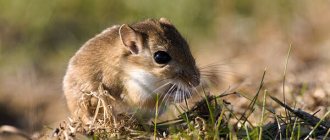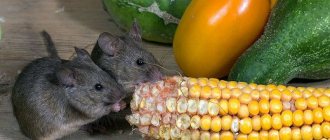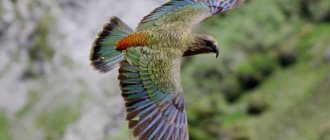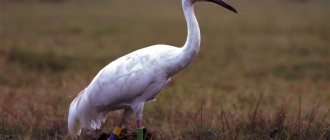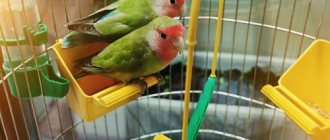Review author: “ZooVita”
Until recently, cats, dogs, and, in rare cases, hamsters and rats were considered pets. But everything in the world is changing, and now the most exotic animals live in apartments. But if all sorts of crocodiles and ferrets are not attractive, then the charming gerbil mouse would be a good option.
Description of the animal gerbil
Gerbils are slightly larger than ordinary mice and hamsters. It is often confused with the rat, which is its closest relative, but unlike these rodents, the gerbil's body is covered with fluffy fur, and there is a cute tassel at the end of its tail.
The height of the mouse varies from 5 to 20 centimeters. The weight of small mice is 15 grams, large mice can grow to 100-200 grams.
Gerbils have a wide variety of colors, obtained through selective breeding, but most often there are animals with a brownish-sandy or brown color, which served as an excellent camouflage among the sands of Mongolia.
The rodent is practically defenseless against predators, so nature gave it acute hearing, excellent vision, quick reaction and strong hind legs to quickly notice the danger and have time to escape.
This subspecies of mice leaves virtually no unpleasant odors, which makes them even more desirable inhabitants of city apartments.
What does a gerbil eat in the desert?
The gerbil’s “menu” consists of plant parts (seeds, stems, shoots, leaves), sometimes insects, locusts, spiders and crickets. In extreme situations, rodents can feed on waste (feces) of camels and donkeys.
The animals are predominantly herbivores, so their pantries, hidden in the depths of their burrows, contain significant (sometimes up to 60 kilograms) food reserves. Considering that gerbils do not live as individuals, but in small families, this is enough for several adult animals, as well as cubs.
Habitat of the gerbil
Under natural conditions, gerbils live in the steppes of Mongolia (where their name comes from); they are also found in China, India, Asia, and North Africa. Among the less exotic places of stay are Transbaikalia, Ciscaucasia, and Kazakhstan. So the question “where do gerbils live” has many possible answers: small animals have remarkably adapted to life in steppes, semi-steppes, deserts and semi-deserts.
However, you don’t have to travel to buy a pet rodent; it can be purchased at almost any major pet store or from breeders. The second option is considered more preferable.
Biology test No. 2, grade 9
Test work No. 2 on the topic: “Patterns of life at the organismal level.”
Viewing the contents of the document “Test work in biology No. 2, grade 9”
Test work No. 2 on the topic: “Patterns of life at the organismal level.”
1. A bacterial cell lacks: a) nucleic acids, b) cell membrane, c) cell nucleus, d) ribosomes.
2. Monocot plants are characterized by venation: a) pinnate, b) palmate, c) arcuate, d) reticulate
3. Ectoderm and endoderm appear for the first time in the process of evolution in representatives of: a) protozoa, b) coelenterates, c) flatworms, d) roundworms.
4. The location of a gene on a chromosome is called: a) genotype, b) locus, c) allele, d) nucleotide.
Gerbil character
Mice are particularly clean, friendly and inquisitive. The favorite pastimes of small animals will be all kinds of outdoor games: they love ladders and steps, small plastic and rag balls.
As can be seen in numerous photos of gerbil mice, they love to rise on their hind legs, examining the surroundings. They can jump high and are always ready to escape from the cage to fully satisfy their natural curiosity. They are not at all afraid of people and willingly make contact, but they do not like to be held in their hands for a long time, squeezed or stroked, limiting their freedom. They are too restless for this.
Gerbils are active during the day, so they will not interfere with night rest. In winter, animals can hibernate.
Their easy-going nature allows them to quickly win the love of all household members or become a favorite guest of the living corners of kindergartens, schools, stations of young naturalists and other zoological circles.
Gerbils do not really like being alone, so they are usually purchased in pairs (two brothers or two sisters) or as a whole family. It is not recommended to add new rodents to existing pets: the old-timers will show their character at first by beating up the newcomers.
Relationship with a person
Currently, gerbils are actively used by humans as pets, as they adapt well to captivity and are quite tame.
In order to choose a gerbil for yourself, it is important to know what the different subspecies look like. To do this, we recommend looking at photographs of gerbils. This will make it much easier to choose your favorite from the animal world.
Where do gerbils live?
For a comfortable living, the gerbil will need a spacious cage, or better yet, a large terrarium or aquarium. High glass walls will protect people from the noise made by the fussy inhabitants, and the floors will protect from debris that will certainly fly from the gerbil’s house.
If preference is still given to the cage, then it will have to be equipped with a high tray so that the bedding does not fall out.
For a low cage, you will need a lid so that the animal cannot get out into the wild simply by jumping up and down. But at the same time, the mice will need a constant flow of fresh air, so a hermetically sealed lid will not work.
Sawdust, hay, and straw are used as filler. They are poured onto the floor in a layer of 15-20 centimeters so that the pet can happily dig passages and build holes.
A separate bowl of sand is used as a toilet.
You should not buy houses with high shelves or dwellings consisting of several open floors: the rather fragile bones of the animal easily break when falling from a height, just like its fluffy tail.
To release excess energy, you need to install a wheel and install small ladders, and for a quiet pastime you will need a cozy house or a small box where the mice will make a cozy nest for themselves.
Driftwood or twigs will help kids clean and grind their teeth.
Top 3: the most interesting facts about the gerbil
- Having appreciated the friendly, playful nature of the animal, a person takes it as a pet. Scientists use mice as test subjects, working to change the color of their fur. Looking at the photo, you can see their achievements, the gerbil mouse now comes in black, white and even spotted. Clawed gerbils are most suitable for home and breeding research.
- Living freely, mice build their homes in the ground. They dig burrows at depths of 1 to 3 m, with one or more exits. The dwelling has several nesting rooms, storage rooms, and a toilet. The tunnel system extends for tens of meters. Gerbils always stock up for cold times, and food can accumulate up to 60 kg.
- When wondering how long gerbil mice live, the answer is mixed. In the wild, rodents live from 3 to 5 months. Older individuals are very rarely found. At home, with good care and nutrition, pets live from 3 to 8 years. This is provided that the ward is not alone.
Gerbil Walks
A short walk around the apartment will only benefit the gerbils. But at the same time, they should always be supervised: having found a secluded corner, mice may consider this their new home, from which it will be difficult to remove them.
The love of gnawing everything that catches the eye can lead to the death of an animal left without supervision.
Gerbil: natural enemies, population
Animal reproduction occurs in different ways, depending on the type of rodent and habitat. During the season, the female is able to bring up to 5 litters. Each contains from 4 to 13 kids. The gestation period lasts from 20 to 25 days. Little mice are born completely helpless. The female, and sometimes the male, care for the offspring until they become independent. The mother feeds the babies with milk for about 2 weeks. During this time, small gerbils grow hair and begin to see and hear. After a month, the grown-up pups leave their parental home and live independently. At home, this process must be monitored, and at the right time the male must be placed in a separate cage.
The gerbil mouse quickly and easily gets used to humans; with good care and maintenance, the rodent responds with tenderness and affection. The animal recognizes its owner by voice and smell, eats from hands, and loves to be stroked on the back. At the same time, mice are clean and unpretentious. In captivity, the animal has almost no enemies, but in the wild there are a lot of people who like to feast on the numerous species of gerbils. Owls, snakes, coyotes, wolves and other predators hunt rodents. Various types of fleas parasitize the skin of gerbils. Mice are also carriers of plague and cutaneous leishmaniasis. Representatives of rodents cause great damage to agriculture, destroying crops. For this reason, people are also enemies of these animals.
The article was read by 900
Nutrition for the pyschanka
It is recommended to feed gerbils three times a week, and they do not need special bowls at all. Food can be placed directly on the bedding. They try to make portions so that they are enough for one time, otherwise the food will lose its attractive appearance, produce juice, and increase humidity, which desert inhabitants do not like. In addition, mice will try to hide uneaten reserves in the litter.
There are no drinking bowls in the cage, and the baby will receive the necessary moisture from fruits and vegetables.
The best option would be a ready-made mixture for rodents. Adherents of homemade food give their pets boiled eggs, vegetables, fresh fruits or soaked dried fruits, nuts, cottage cheese, white or gray crackers. But the pieces must be small in size so that the mouse can enjoy eating.
Fresh greens will be an excellent addition to the diet: leaves, twigs, grass, sprouted sprouts.
It is forbidden to give citrus fruits (due to the pungent odor), salty, peppery and sweet foods, potatoes and cabbage.
Gerbils mark their territory
Both male and female gerbils have scent glands and use them to mark their territory. However, males use it mainly in large groups. They constantly mark their territory by rubbing their scent gland over their cage and living area, which often causes them severe pain and sometimes leads to tumors.
It is recommended to keep no more than two males, and it is also recommended to regularly check your hamsters' scent glands for signs of tumors and ulcers.
The scent gland is located on the underside of the animal's body and runs along the midline of the body. This is an oval, hairless area that is slightly darker than a gerbil's skin.
Photos of all types of gerbil
Gerbils' teeth never stop growing
Gerbils' teeth do not stop growing until they die. Yes, it's true, they don't stop growing. However, in captivity they need constant care and attention. You will need to constantly check the health of your gerbil's teeth.
Giving your gerbil toys and chewing items will help keep your gerbil's teeth healthy. You will also need to check to see if the gerbil's teeth are aligned with each other. This can cause overgrowth of the incisors and/or cheek teeth (the teeth at the back of the mouth).
Overgrown incisors look like tusks and can cause health problems, infections and general ill health. If you suspect your gerbil has any dental problems, it is recommended that you contact your veterinarian as soon as possible.
Communication
The first few days the pets get used to the new environment, so it is better to leave them alone. When you feel the new residents are ready, begin to approach them carefully while they are awake. Gradually gain their trust.
Why does the rabbit have no appetite?
Offer them treats through the bars of the cage. When the treat is accepted without fear, offer it through the open cage door. Then place the treat in your palm and wait until your pet sits on it. Place the treats so that she has to climb onto your hand to get them.
Once your gerbil gets used to it, you can hold and carry your pet in your cupped hands. Many gerbils love to have the back of their heads and sides scratched. Do not grab the baby by the tail; if it seems to you that he is falling, it is better to gently hold him by the scruff of the neck.
